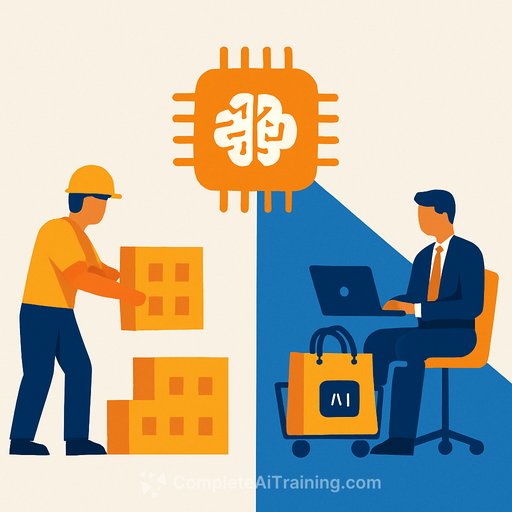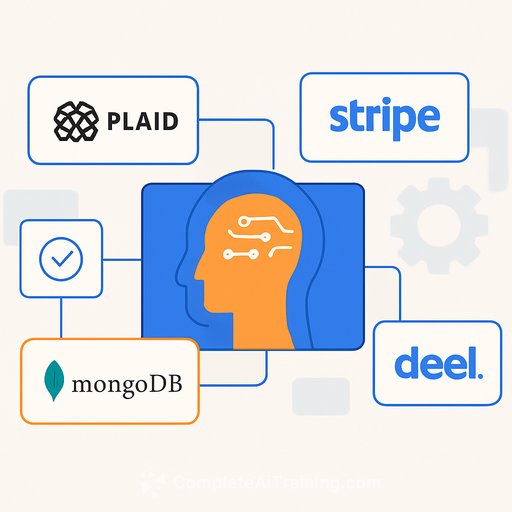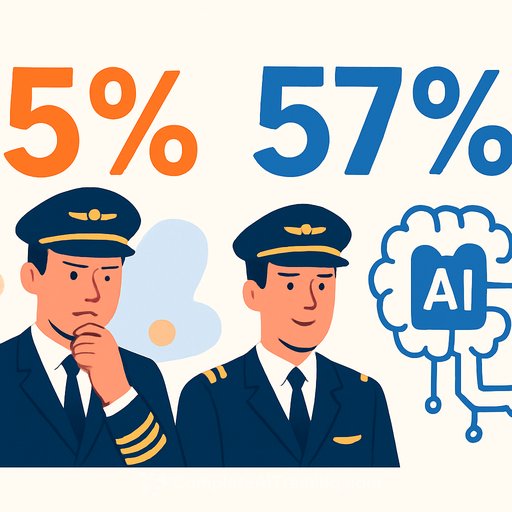Build vs Buy for Enterprise AI (2025): A U.S. Market Decision Framework for VPs of AI Product
Enterprise AI in the U.S. has moved beyond experimentation. CFOs demand clear ROI, boards expect solid risk oversight, and regulators require controls aligned with existing risk management standards. Every VP of AI faces a critical question: Should capabilities be built internally, purchased from vendors, or a combination of both?
The answer is never one-size-fits-all. It depends on the specific use case, strategic goals, regulatory environment, and execution capabilities. The decision isn’t simply about in-house versus outsourced—it’s about matching each AI application to its strategic value, compliance demands, and operational readiness.
The U.S. Context: Regulatory and Market Anchors
Unlike the EU’s prescriptive AI Act, the U.S. regulation is sector-focused and enforcement-driven. Key frameworks and expectations include:
- NIST AI Risk Management Framework (RMF): The federal guideline shaping AI procurement and vendor assurance, increasingly adopted by enterprises.
- NIST AI 600-1 (Generative AI Profile): Sets standards for testing hallucinations, monitoring, and providing evidence.
- Banking and Finance: Federal Reserve SR 11-7 on model risk, FDIC/FFIEC guidance, and OCC scrutiny on models in underwriting.
- Healthcare: HIPAA plus FDA oversight for clinical algorithms.
- FTC: Enforcement against deceptive practices related to transparency and disclosure.
- SEC: Requires public companies to disclose material AI-related risks, including bias and cybersecurity.
Boards and regulators will scrutinize your oversight, model governance, and vendor risk management. This context makes the Build vs Buy decision a matter of evidence and defensibility.
Build, Buy, and Blend: The Executive Portfolio View
- Build when AI drives competitive advantage, involves sensitive data (PHI, PII, financial), or requires deep integration with proprietary systems.
- Buy when the use case is commoditized, speed is critical, or vendors provide compliance capabilities you lack.
- Blend for most scenarios: combine vendor platforms (multi-model routing, safety, compliance) with custom work on prompts, retrieval, orchestration, and evaluation.
A 10-Dimension Framework for Scoring Build vs Buy
Replace guesswork with a structured scoring model. Each dimension is rated 1–5 and weighted by importance.
| Dimension | Weight | Build Bias | Buy Bias |
|---|---|---|---|
| 1. Strategic differentiation | 15% | AI is your product moat | Commodity productivity gain |
| 2. Data sensitivity & residency | 10% | PHI/PII/regulatory datasets | Vendor evidences HIPAA/SOC 2 |
| 3. Regulatory exposure | 10% | SR 11-7/HIPAA/FDA obligations | Vendor provides mapped controls |
| 4. Time-to-value | 10% | 3–6 months acceptable | Must deliver in weeks |
| 5. Customization depth | 10% | Domain-heavy, workflow-specific | Configurable suffices |
| 6. Integration complexity | 10% | Embedded into legacy/ERP/control plane | Standard connectors adequate |
| 7. Talent & ops maturity | 10% | LLMOps with platform/SRE in place | Vendor hosting preferred |
| 8. 3-year TCO | 10% | Infra amortized, reuse across teams | Vendor’s unit economics win |
| 9. Performance & scale | 7.5% | Millisecond latency or burst control required | Out-of-box SLA acceptable |
| 10. Lock-in & portability | 7.5% | Need open weights/standards | Comfortable with exit clause |
Decision rules: Build if Build score beats Buy by 20% or more. Buy if vice versa. Blend if scores are within ±20%. This method transforms debates into data and supports transparent board reporting.
Modeling TCO on a 3-Year Horizon
A common mistake is comparing 1-year subscription costs to 3-year build costs. Accurate decisions need aligned timeframes.
Build TCO (36 months) includes:
- Internal engineering (AI platform, ML engineering, SRE, security)
- Cloud compute (training, inference, autoscaling)
- Data pipelines (ETL, labeling, continuous evaluation, red-teaming)
- Observability (vector stores, monitoring pipelines)
- Compliance (NIST RMF audits, SOC 2 readiness, HIPAA reviews, penetration tests)
- Egress and replication costs across regions
Buy TCO (36 months) includes:
- Subscription/license fees and seats
- Usage fees (tokens, API calls, context length)
- Integration and change management uplift
- Add-ons like proprietary RAG, evaluation, safety layers
- Vendor compliance certifications and deliverables
- Migration and cloud egress fees upon exit
When to Build (U.S. Context)
Build is best suited for:
- Strategic IP: AI models central to revenue, such as underwriting logic or risk scoring.
- Data control: Handling PHI, PII, or trade secrets that can’t be exposed to external vendors.
- Custom integration: Deep embedding into claims, trading, or ERP systems.
Risks to consider: Continuous compliance requires documented evidence, not just policies. Senior LLMOps talent is scarce and expensive. Hidden costs in red-teaming and observability can cause budget overruns.
When to Buy (U.S. Context)
Buy works well for:
- Commodity tasks: Note-taking, Q&A, ticket deflection, basic code copilots.
- Speed: Deployment within a fiscal quarter.
- Vendor compliance: Established vendors aligned with NIST RMF, SOC 2, HIPAA, and sometimes ISO/IEC 42001.
Risks include: Vendor lock-in due to proprietary APIs. Budget unpredictability from token metering. Exit costs driven by cloud egress and re-platforming.
The Blended Operating Model (Default for U.S. Enterprises in 2025)
Most Fortune 500 firms settle on a blend: buying vendor platforms for governance, audit trails, multi-model routing, RBAC, DLP, and compliance attestations; while building the last mile—custom retrieval, tool adapters, evaluation datasets, hallucination tests, and sector-specific guardrails.
This approach balances scale with control over sensitive IP and satisfies board-level oversight.
Due Diligence Checklist for VPs of AI
If Buying Vendors:
- Verify ISO/IEC 42001, SOC 2, and NIST RMF alignment.
- Ensure HIPAA BAA, data retention, redaction, and regional segregation terms.
- Negotiate explicit data portability and cloud egress fee relief in contracts.
- Confirm SLAs on latency, throughput, U.S. data residency, and bias/safety evaluations.
If Building In-House:
- Operate under NIST AI RMF categories: govern, map, measure, manage.
- Use multi-model orchestration to avoid lock-in; build robust observability (traces, cost metrics, hallucination measurement).
- Staff a dedicated LLMOps team with embedded evaluation and security experts.
- Implement cost controls like request batching, retrieval optimization, and egress minimization.
Decision Tree for Executives
- Does this AI capability provide a competitive edge within 12–24 months?
- Yes → Lean toward Build.
- No → Consider Buy.
- Is your governance maturity aligned with NIST AI RMF?
- Yes → Lean Build.
- No → Blend (Buy vendor guardrails, build last-mile).
- Would vendor compliance artifacts satisfy regulators faster?
- Yes → Lean Buy or Blend.
- No → Build to meet obligations.
- Does 3-year TCO favor internal build or vendor subscription?
- Internal lower → Build.
- Vendor lower → Buy.
Example: U.S. Healthcare Insurer Use Case
- Use case: Automated claim review and explanation of benefits.
- Strategic differentiation: Moderate—efficiency over competitor baseline.
- Data sensitivity: PHI subject to HIPAA.
- Regulation: HHS plus possible FDA oversight.
- Integration: Tight coupling with legacy claim systems.
- Time-to-value: 6 months feasible.
- Internal team: Mature ML pipeline, limited LLMOps experience.
Recommended approach: Blend. Use a U.S. vendor platform with HIPAA BAA and SOC 2 Type II for base LLM and governance. Build custom retrieval layers, medical code adaptation, and evaluation datasets. Map oversight to NIST AI RMF and document evidence for board audit committees.
Key Takeaways for VPs of AI
- Use a scored, weighted framework to assess each AI use case, creating audit-ready evidence for boards and regulators.
- Expect blended models to dominate. Keep last-mile components like retrieval, prompts, and evaluators as enterprise IP.
- Align both builds and buys with NIST AI RMF, SOC 2, ISO/IEC 42001, and sector-specific laws like HIPAA and SR 11-7.
- Always model total cost of ownership over three years, including cloud egress fees.
- Negotiate exit and data portability clauses upfront in vendor contracts.
The Build vs Buy decision for U.S. enterprises in 2025 is about strategic allocation, governance transparency, and disciplined execution. VPs of AI who adopt this framework will accelerate deployment while strengthening resilience to regulatory and board scrutiny.
Your membership also unlocks:










